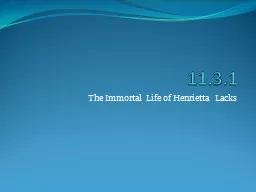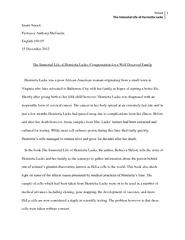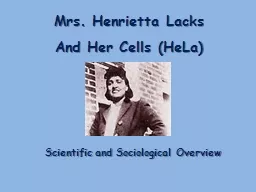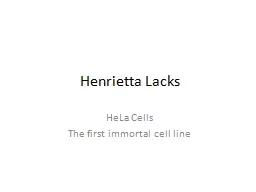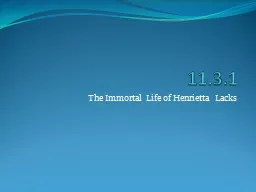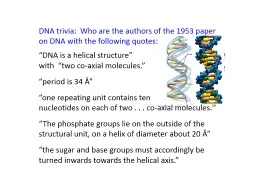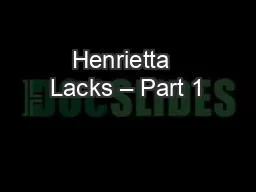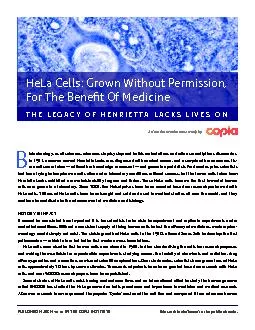PPT-11.3.1 The Immortal Life of Henrietta Lacks
Author : trinity | Published Date : 2022-06-14
Standards and Assessments Standards Assessed Standards RI9103 Analyze how the author unfolds an analysis or series of ideas or events including the order in which
Presentation Embed Code
Download Presentation
Download Presentation The PPT/PDF document "11.3.1 The Immortal Life of Henrietta La..." is the property of its rightful owner. Permission is granted to download and print the materials on this website for personal, non-commercial use only, and to display it on your personal computer provided you do not modify the materials and that you retain all copyright notices contained in the materials. By downloading content from our website, you accept the terms of this agreement.
11.3.1 The Immortal Life of Henrietta Lacks: Transcript
Download Rules Of Document
"11.3.1 The Immortal Life of Henrietta Lacks"The content belongs to its owner. You may download and print it for personal use, without modification, and keep all copyright notices. By downloading, you agree to these terms.
Related Documents

